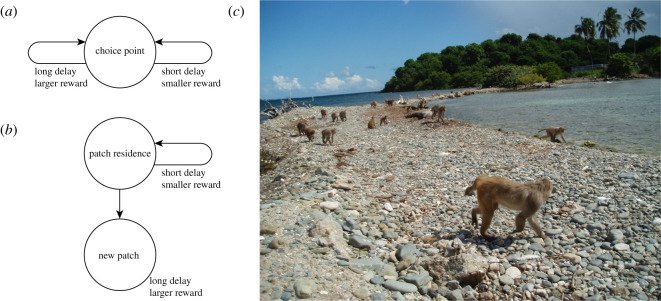Figure 2.
(a) A traditional discrete choice task used to study time preferences is the intertemporal choice task (reviewed in [13]). (b) A patch-leaving task has an ostensibly isomorphic structure, except that the specific options available on the next trial are determined entirely by the choices made on the present trial [12]. This feature has major effects on choice patterns and, although the element of cross-trial dependency is ostensibly more difficult, renders behaviour nearly optimal [21]. (c) The patch-leaving task, but not the intertemporal choice task, is ethologically valid. Here, monkeys at the Cayo Santiago field station travel between their morning foraging site on Large Cay to their afternoon foraging site on Small Cay.

